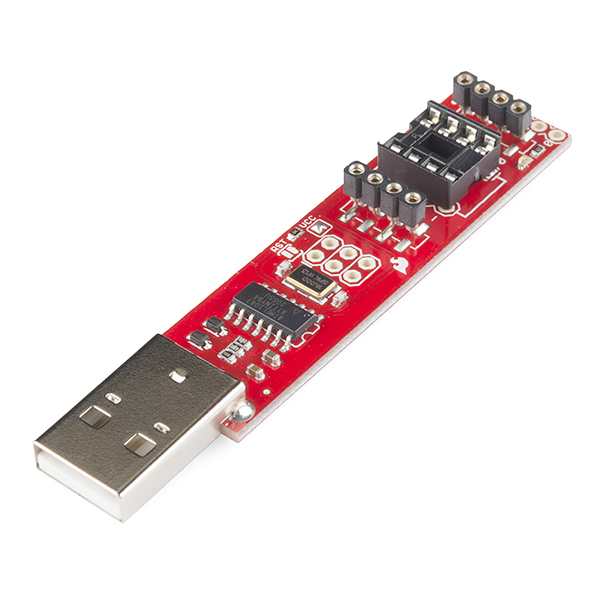
Most programmable logic devices use a variant of the JTAG protocol for ISP, in order to facilitate easier integration with automated testing procedures.
#Avr spi programmer serial
Typically, chips supporting ISP have internal circuitry to generate any necessary programming voltage from the system's normal supply voltage, and communicate with the programmer via a serial protocol. Microcontrollers are typically soldered directly to a printed circuit board and usually do not have the circuitry or space for a large external programming cable to another computer. The other advantage is that production can always use the latest firmware, and new features as well as bug fixes can be implemented and put into production without the delay occurring when using pre-programmed microcontrollers. This may allow manufacturers to program the chips in their own system's production line instead of buying pre-programmed chips from a manufacturer or distributor, making it feasible to apply code or design changes in the middle of a production run. The primary advantage of in-system programming is that it allows manufacturers of electronic devices to integrate programming and testing into a single production phase, and save money, rather than requiring a separate programming stage prior to assembling the system. Some ISP interfaces manage to achieve the same with just a single pin, others use up to 4 for implementing a JTAG interface. In general, modern protocols try to keep the number of pins used low, typically to 2 pins. Almost all manufacturers of microcontrollers support this feature, but all have implemented their own protocols, which often differ even for different devices from the same manufacturer. There is no standard for in-system programming protocols for programming microcontroller devices. It also allows firmware updates to be delivered to the on-chip memory of microcontrollers and related processors without requiring specialist programming circuitry on the circuit board, and simplifies design work. Support for multiple languages, modify or add any language.ġ2.Support for Windows 2000, Windows XP, Windows Vista, Windows 7, Windows 8.In-system programming (ISP), or also called in-circuit serial programming (ICSP), is the ability of some programmable logic devices, microcontrollers, and other embedded devices to be programmed while installed in a complete system, rather than requiring the chip to be programmed prior to installing it into the system.
#Avr spi programmer upgrade
Software and firmware can upgrade automatically.ġ0. Support 24 EEPROM, 25 EEPROM, 93 EEPROM, SPI FLASH, AVR etc.ĥ.Plug-in ability is powerful: can directly program FPGA POF files, ASUS CAP files!ĩ. Safe to use: Built-in self recovery fuse to provide ongoing protection of equipment.Ĥ. USB 2.0 interface, the speed is up to 12Mbps.ģ. High quality! Base on ARM Cortex 32 core.

!kAVGiDjT!nj9PMz-S1fDsElzJdKdFw9hfS-pXAROFQMzeq元5YFkġ. !wAdC2Qwb!esXWEkEOXrhSZIzhYPkz53_HZxsjN6tnQKArsJsVqdI
#Avr spi programmer software download
SkyPRO USB programmer software download link:



SkyPRO USB programmer can't support Rolling code MICROCHIP: HCS101 HCS200 HCS201 HCS300 HCS301 HCS320 HCS360 HCS361 SkyPRO USB Programmer for 24 25 93 BIOS SPI FLASH AVR Skypro high speed USB Programmer Based on ARM Cortex 32 core, SkyPRO USB BIOS Programmer can 24, 25, 93, EEPROM, SPI Flash, AVR lite pack, DataFlash.


 0 kommentar(er)
0 kommentar(er)
